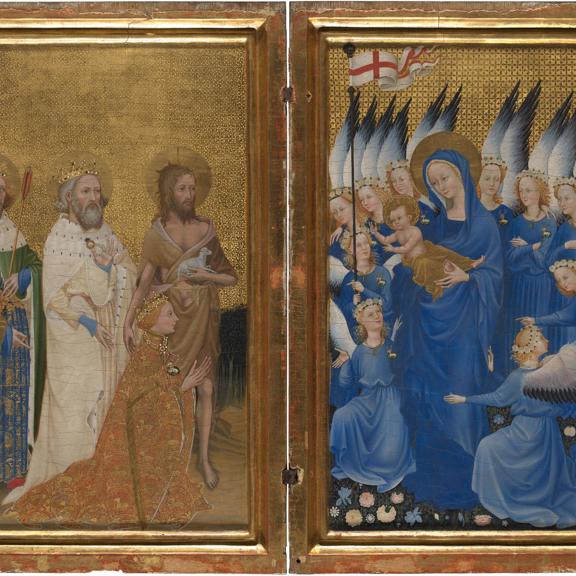It is not known who painted the Wilton Diptych; artists from England, France, Italy and Bohemia have been suggested. Many of the earliest paintings in the collection cannot be linked with a specific artist. The practice of signing a finished painting was not widespread before the late 15th century. It would probably not have occurred to the majority of earlier artists to put such a personal stamp on the object that they had created, particularly if it was be used in religious devotions.
Their status was that of highly skilled craftsmen, who usually worked collaboratively with others. All painters trained as part of a studio, run by a master artist (registered with the local trade guild). Master artists might also work with associates of similar status, as an efficient way to pool different talents. Paintings were rarely therefore the result of one 'hand' alone, and their makers did not see themselves as unique individuals in the way that artists have done in later years, especially since the 19th century. Where one artist or studio seems to have been responsible for a group of pictures, the maker is often referred to as 'Master', followed by either the subject or location of their most notable work - for example the Master of St Giles or the Master of Liesborn.

